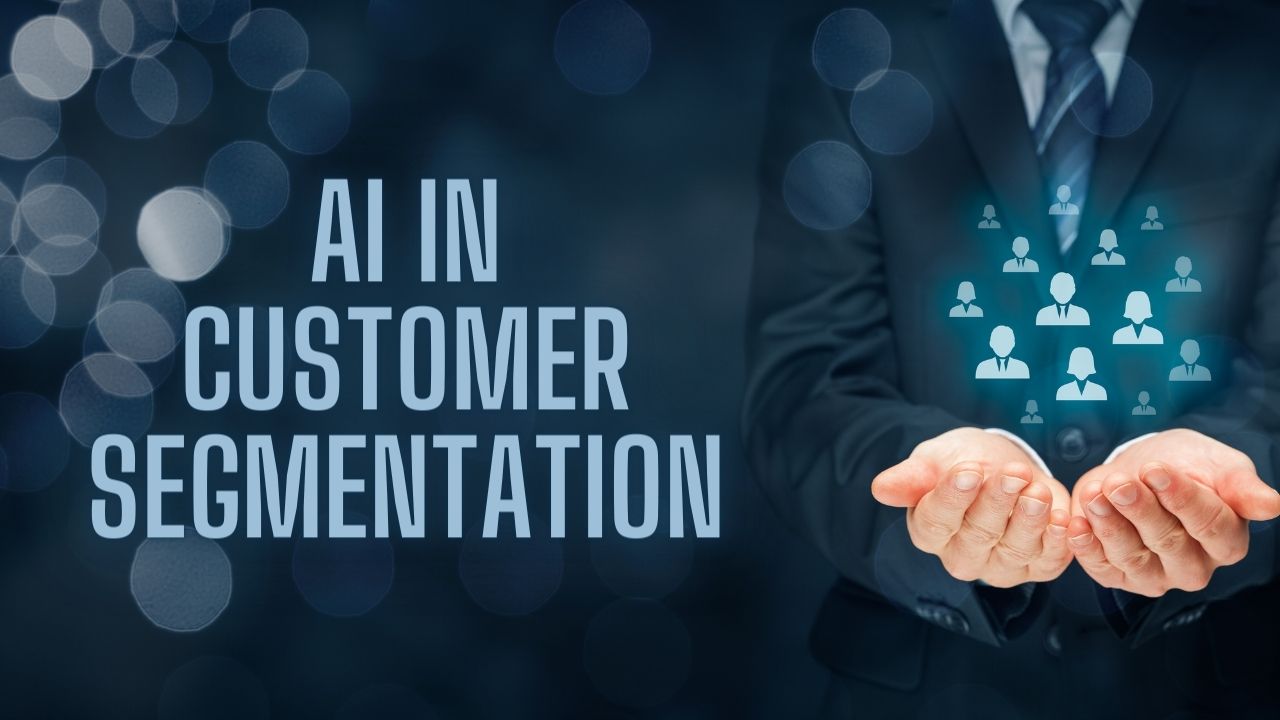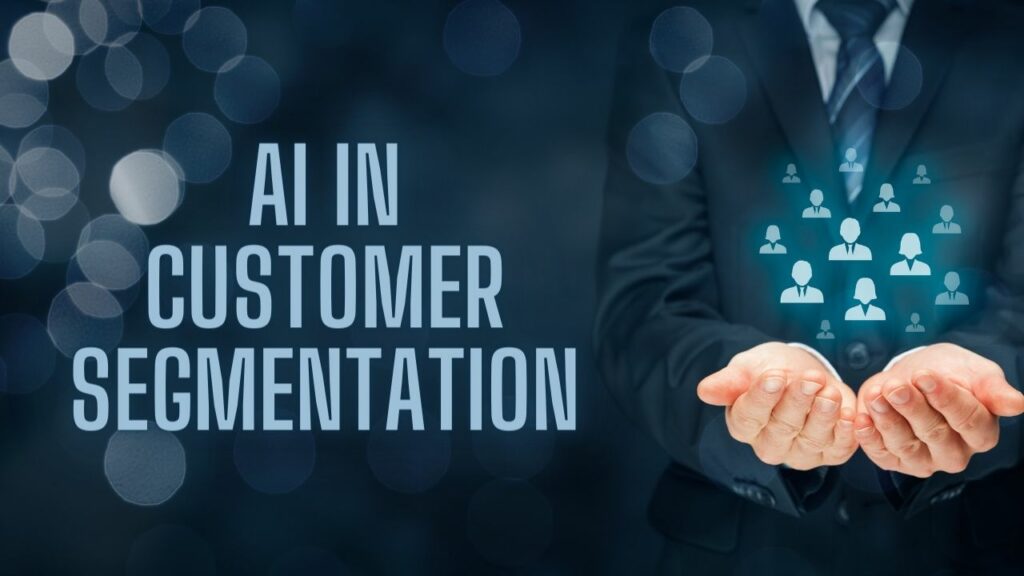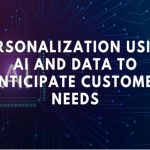 One of the foundational elements of a successful marketing strategy is accurate segmentation. You can target messaging to clients with comparable traits and requirements by segmenting or separating your audience into groups. Businesses can employ a variety of market segmentation techniques. In contrast to smaller, more precisely targeted groups, these typically produce vast, generic groups. Using AI in customer segmentation versus manual segmentation offers a variety of benefits.
One of the foundational elements of a successful marketing strategy is accurate segmentation. You can target messaging to clients with comparable traits and requirements by segmenting or separating your audience into groups. Businesses can employ a variety of market segmentation techniques. In contrast to smaller, more precisely targeted groups, these typically produce vast, generic groups. Using AI in customer segmentation versus manual segmentation offers a variety of benefits.
What is customer segmentation?
Customer segmentation is an effective marketing tactic that enables you to target customers more effectively by better understanding them. It can assist you in boosting sales, boosting customer loyalty, and lowering customer acquisition costs. Consumer segmentation entails dividing your clientele into several categories based on shared traits.
It is a method for businesses to comprehend their clients. Making strategic product development and marketing choices is more straightforward when one knows the variations among client segments.
The possibilities for segmenting are limitless and largely depend on your client data volume. Starting with the fundamental factors, such as gender, interest, or age, it progresses to considerations like “time since user opened our app” or “time spent on website X.”
What’s the difference between personalization and segmentation?
There are a few differences between personalization and segmentation. By dividing up clients into categories according to particular (generic) traits, segmentation serves as the framework. Personalization enables brands to connect with them individually based on each person’s specific needs, wants, and motivations. We might think of segmentation as “macro-segmentation” and personalization as “micro-segmentation.”
However, using ML and AI in marketing initiatives is the only way to personalize advertising genuinely. This is because these cutting-edge tools assist marketing teams in continuously capturing and analyzing every brand encounter. After all, is said and done, you can utilize these insights to target particular clients with customized communications massively.
The exact amount of information or intricacy is not producible by segmentation alone in insights. As a result, AI-enabled data analytics is necessary to target customers with personalized messaging on a broad scale.
Key challenges of customer segmentation

Data quality
Data quality is one of the main challenges with consumer segmentation. Several advertising databases need to be consistently updated or cleaned, and poor segmentation quality is frequently the result of erroneous data in the source systems.
Data management
The foundation of efficient customer segmentation is accurately labeling data with words and phrases. Many users that enter data into systems wrongly employ segmentation definitions because they need to comprehend them. Database users must train to understand the customer segments identified, the data that categorizations reflect in the details, and when to apply each segmentation for the appropriate analytical scenarios.
Time drain
Finding the target audience, analyzing the research data, and creating marketing campaigns require much time. Most small businesses employ market segmentation to determine who their ideal clients are. Market segmentation comprises creating consumer profiles using information from several sources, including demographic, behavioral, technological, and other sorts of data. Marketers then evaluate the size of the target market to see if it can produce sizable profits. After that, they spend time looking for platforms that will enable them to connect with their core clientele.
Machine Learning for customer segmentation
Finding insights and trends in customer data through machine learning approaches is a terrific tool. Decision-makers can use artificial intelligence models as practical tools. They can precisely identify client segments, which is far more challenging to perform manually or with traditional analytical techniques.
More time
It takes time to segment customers manually. Finding patterns manually requires months or even years of analysis of large amounts of data. Additionally, it could not have the expected precision to be helpful if done unconventionally.
Previously, customer segmentation was done manually and needed to be more accurate. You would manually create and populate several data tables, then examine the information like a detective using a magnifying glass. Nowadays, it is far better to apply machine learning, which can free up time to concentrate on more challenging challenges that call for creative problem-solving.
Ease of retraining
The “develop once and use forever” project is not customer segmentation. After your model finishes, data constantly changes, trends shift, and everything is altering. After development, newly labeled data typically becomes accessible and is a fantastic resource for enhancing your model’s overall performance.
The two most common methods for updating client segmentation models are as follows:
- Retrain the old model using it as a starting point
- Maintain the current model and integrate its results with the new model
Better scaling
Thanks to cloud infrastructure, machine learning models that are in use support scalability. For upcoming adjustments and input, these models are highly adaptable. Think of a business that, for instance, has a customer segmentation plan in place and now has 10,000 consumers. In a perfect world, we wouldn’t need to start a new project to handle the increased data if the company had 1 million consumers after a year. The ability to handle additional data and scale in production is inherent in machine learning models.
Higher accuracy
With machine learning techniques like the elbow approach, it is simple to determine the value of an ideal number of clusters for a set of customer data. The model’s performance and the perfect number of groups significantly improve when we utilize machine learning.
Key benefits of AI-powered customer segmentation
The following are some benefits of employing unique AI-based solutions to segment your target audience:
AI highlights what’s missing
AI eliminates all uncertainty in the situation. You’ll be fully aware of your client’s needs and the points of interaction that are most important to them. When company expectations diverge from the target audience’s expectations, AI will notify your personalized marketing team and allow them to make the necessary adjustments.
Quickly identify the root cause
Smart algorithms will promptly notify you if an issue is with an advertising initiative, support, or client experience. AI tools will inform you of the issue’s nature, location, and root cause. This strategy can assist businesses in fast identifying problems with their advertisements, product flaws, and customer attrition.
Real-time emotional and cognitive responses
AI also enables businesses to comprehend how their clients feel about a good or service in real-time. It’s important because, if you later target your customers with a survey, they won’t recall their feelings. Additionally, organizations may take prompt action to stop abandonment by being aware of their emotions in real time.
Stop or Prevent Tumbling Sales
When your sales start declining, AI will allow you to modify your campaigns to help halt them. For instance, you can avoid targeting a specific segment or refuse to extend credit if that segment is likely to return or fail to pay in full.
The costs related to customer attrition and new acquisitions are lessened by helping businesses retain their current clientele. We can observe that the following is essential for effective and precise consumer segmentation:
- Possess a large amount of accurate and complete data—the more, the better.
- Spend money on acquiring the knowledge, tools, and expertise required to work with data and segmentation tactics.
Determine new market opportunities
Marketing professionals can find categories they still need to reach by segmenting their consumer base into smaller groupings. Even while this is the case, there are still variances among customers in each group, making the most effective way to target one person in a segment different from the most effective way to target another in the same sector.
Improve distribution strategy
Businesses must understand how and when consumers purchase goods and services to design their distribution methods effectively. More than typical customer segmentation is required to give this information personally.
Why should you use machine learning for customer segmentation?
In the past, they classified customers required to look at a few high-level features. Age, gender, wealth, and region are a few examples of possible exclusions. While this data is useful, it needs to give a more precise and comprehensive picture of who your consumers are and what they are looking for.
You may move beyond these fundamental traits using machine learning to understand your customers truly. Machine learning can develop models that precisely anticipate which customers will react to which messages and offers using customer datasets, including historical contacts, behaviors, and emotions.
This is a potent tool for businesses looking to give their clients more individualized experiences. Companies can boost customer satisfaction and loyalty by segmenting their customer base based on each person’s unique requirements and preferences.
By recognizing which consumers are most likely to leave and taking action to stop it, machine learning can also assist businesses in saving money. Additionally, companies can concentrate on attracting and keeping more clients that share their characteristics by identifying which consumers are the most profitable.
With the help of machine learning, you can develop more individualized, focused, and successful marketing efforts by getting a more full and accurate image of your clients.More precise group identification can be achieved using machine learning methods like the k-means clustering algorithm, but creating such models is no simple task.
Best practices
Delivering individualized experiences to your clients and fostering growth depends on effectively segmenting your customer base. One way to succeed is to monitor essential stats like market share, average order value, and client lifetime value. Thanks to these higher-order indicators, you will better understand which market segments are most crucial to your company.
Cross-selling and upselling are successful strategies for boosting sales and revenue, but they can only be challenging with a thorough grasp of your clientele. Customer segmentation can pinpoint clients most likely interested in related or more expensive products and send them targeted advertising.
FAQs
Can AI or automation help improve customer segmentation in email campaigns?
Yes, Besides changing the send time to match customer behavior better, AI can also propose an alternative subject line that is more likely to increase open rates or segment your audience to increase engagement and conversion rates.
How can companies use data analytics and artificial intelligence to improve their marketing efforts?
AI marketing can assist you in sending clients customized communications at the correct times in the consumer lifecycle. Additionally, it can assist digital marketers in identifying at-risk clients so they can send them messages designed to re-engage them with the company.
What is the role of AI in customer satisfaction?
By analyzing consumer data and important indicators, artificial intelligence enables businesses to offer goods or services to clients in line with their preferences for browsing and making purchases. Massive data sets are analyzed by AI, which can then infer data about the location and weather and offer clients material that they might find interesting.





